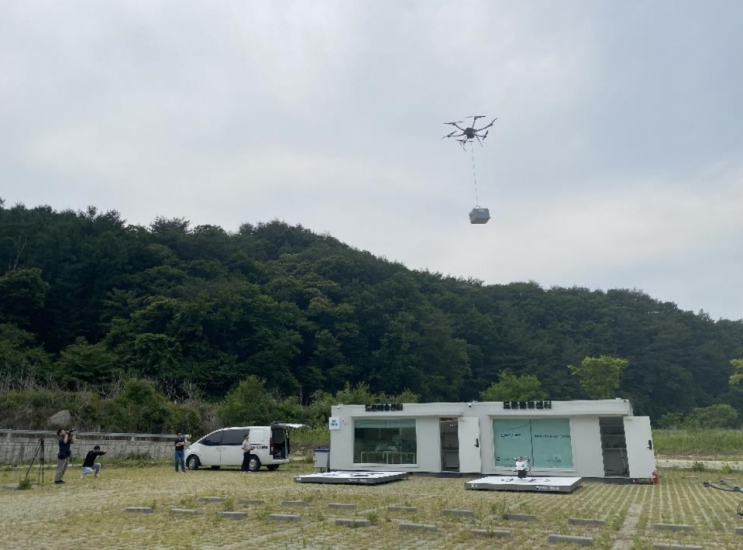The Republic of Korea’s Ministry of Land, Infrastructure, and Transport (MOLIT) has announced that 14 municipalities, selected in March for the drone demonstration city project, have completed preparations for drone delivery. They will begin to officially launch the K-Drone Delivery service this month.
MOLIT says K-Drone is “a drone delivery service that applies a comprehensive safety management system, such as establishing delivery bases, delivery points, flight routes, and delivery apps in accordance with the ministry’s drone delivery guidelines, while the operating companies should be able to receive approvals for their drone safety management system and monitor drone flights in real-time”.
To ensure the safety of beyond visual line of sight (BVLOS) drone flights for delivery, MOLIT granted special flight approvals and inspected the setup of delivery hubs, points, and control centres by local governments. A standards manual was issued to help drone delivery companies establish drone safety management systems and the ministry also implemented a monitoring system and a drone situation management centre to ensure safe flight operations.
MOLIT has been working together with the Korea Institute of Aviation Safety Technology, Korea Transportation Safety Authority, Korea Aerospace University, and Sejong Cyber University to establish the K-Drone delivery safety management system.
The drone delivery areas implemented by the 14 local governments, including 32 island areas, 17 parks, and one port, are Jeju, where the service was already launched on 19 July, and Gongju, Gimcheon, Pocheon, Yeosu, Seongnam, Yangju, Changwon, Ulju, and Tongyeong beginning in August, and Seosan, Namwon, Incheon, and Busan that are scheduled to begin operations in September.
Delivery items include meals and household goods up to 3 kg. Drones can also quickly deliver defibrillators and first aid kits for emergencies. Several large corporations will participate in the K-Drone Delivery project to provide items such as smartphones and water purifiers directly to consumers. The range of delivery items may become more diverse in the future.
For more information
Ministry of Land, Infrastructure, and Transport
Image: MOLIT




